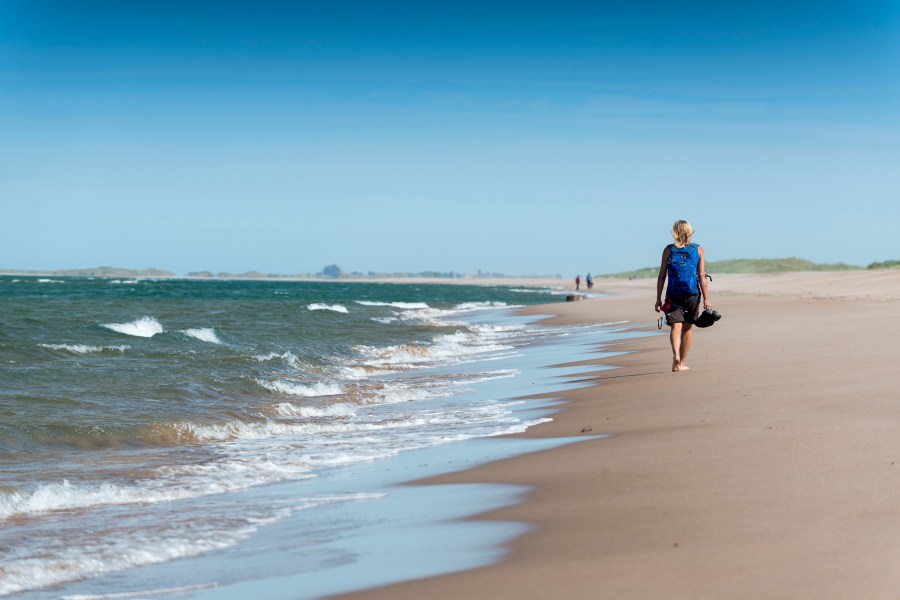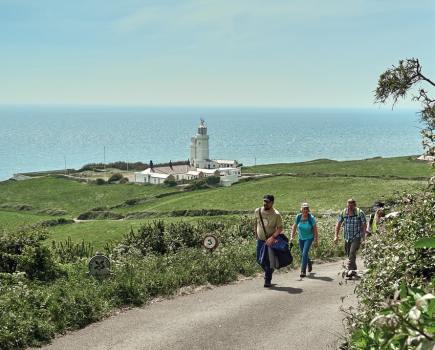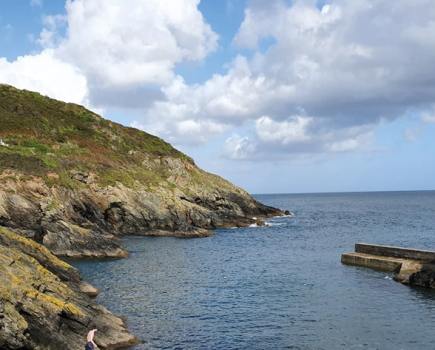Steve Newman reveals why there is so much to enjoy on England’s most north-easterly shoreline – the Northumberland coast.
The Northumberland coast has only recently become a major part of the tourist trail, which is surprising as its beaches – stretching for miles under open skies with castles clinging on the cliff tops by their fingernails – are some of the finest anywhere in the world.
Nationally important in terms of the long stretches of sand dunes that separate the land from the sea and the incredible offshore wildlife of dolphins and hundreds of thousands of seabirds, there is so much to discover here, no matter what your age or interest.
The Holy Island of Lindisfarne, for example – which the sea condescendingly offers access to twice a day – is a magical place but it also offers great danger and you must be aware of the safe crossing times before you attempt to visit. You can drive across, but many people walk in the footstep of the saints and pilgrims by crossing the sands.
“It’s a magical experience, especially at sunset.” says Patrick Norris who with his Footsteps company (footstepsnorthumberland.co.uk) runs organised tours across the sands “However, I wouldn’t advise anyone to attempt it on their own unless they know exactly what they’re doing.”
On this coastline there are far more suitable beaches than safe ports so the traditional fishing coble evolved to operate from the shore rather than harbours. Its origins are said to lie in the Viking longboat and it’s not difficult to see why. You can still see them today at Amble, Boulmer and Craster, harvesting salmon and lobsters as they have done for centuries.
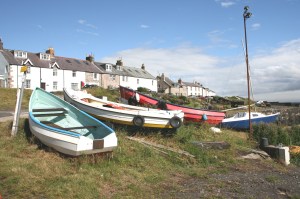
The 39 miles from Amble to Berwick-upon-Tweed is a designated Area of Outstanding National Beauty and you can walk the whole stretch by following the England Coast Path. Why not get the double decker X18 bus that follows the entire length even calling at Holy Island when the tides are right? With miles of quiet country lanes and traffic free cycle routes and bridleways you really can get away from people in such a short time.
The spectacular sea bird colonies are at their peak from early spring to mid-summer when the birds leave on their annual migration, the seal pups appear in October whilst the dolphins are here all year round. The ANOB produce an excellent website with great ideas. northumberlandcoastaonb.org
If you want to get close to the coastal wildlife then try a couple of hours with Ranger Jane’s Beach school at Seahouses (rangerjane.co.uk) exploring the rock pools with your net and bucket. It’s great fun for families and children of all ages from seven to 70! Plus you’re helping conservation by monitoring the species you find.
The more industrial southern coast should not be forgotten however as Newbiggin has a lovely beach, an excellent visor and wildlife centre with free parking plus one the biggest working coble fleets. It’s also famous for its modern art statue of Ebb and Flo in the middle of the bay.
All in all, the Northumberland coast is a magical place. Pick your time to go but perhaps more importantly simply take your time too. visitnorthumberland.com
THE TOP 20 THINGS TO DO
ALL ABOARD
1. The Farne Islands some two miles off the coast, often called “Europe’s Galapagos” as you get so close to the puffins, Eider ducks and thousands of other seabirds as well as the dolphins and seals are a must. Boats sail from Seahouses Harbour with sunset cruises and sailings to Holy Island also on offer.
2. Berwick Boat Trips sail from the pontoon at Berwick-upon-Tweed and up the river to The Scottish Border at the 200-year-old Chain Bridge, passing castles and monuments on the way. They also offer estuary and coastal trips out to sea spotting dolphins and seals.
3. Puffin Cruises operate boat trips out to circumnavigate the 40,000 sea bird sanctuary of Coquet Island, sailing from the dock steps at Amble harbour. Apart from Puffins, kittiwakes and guillemots the island is home to a colony of Britain’s rarest seabird the roseate tern. There is also a grey seal colony found on the island all year round.
4. Golden Gate Farne Island Boat Trips run the only boat allowed to land at the Longstone Lighthouse the outermost of the Farne Islands. They also have exclusive access to tour inside the lighthouse where you can climb to the top and visit the Victorian heroine Grace Darling’s bedroom.
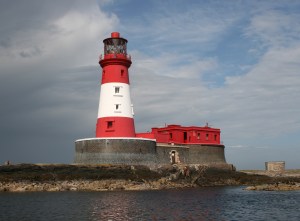
EAT AND DRINK
5. The Jolly Fisherman at Craster and The Fishing Boat Inn at Boulmer are both perched directly above the sea where you can eat and soak up the sound of the waves and mewing of the gulls.
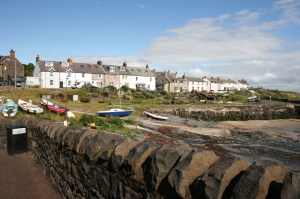
6. The Ship Inn at Low Newton brews its own beer and is situated in the preserved fishing square now owned by The National Trust. Great food but be advised the car park is 300 yards away up a steep slope.
7. For food on the hoof the Pipers Pitch in the quarry car park at Craster takes some beating. This catering van has an outstanding reputation, often resulting in long queues in the summer but it’s well worth it.
8. Robson’s at Craster and Swallow Fish in Seahouses are traditional kipper smoke houses but you can also get smoked salmon and haddock seafood and other local seafood delicacies.
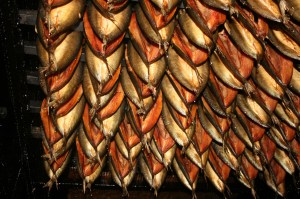
BEACH LIFE
9. Take the bus from Bamburgh to Seahouses and walk the three miles northwards. You’ll need strong, waterproof shoes as you cross streams and rocks on the way. It’s better to do it in this direction as you approach the looming mass of Bamburgh Castle getting ever closer.
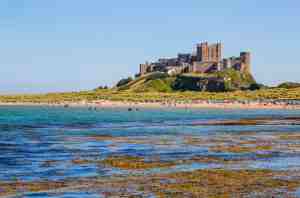
10. Sugar Sands is a tiny haven and one of a series of delightful little coves offering nothing but the sound of the gulls and the waves lapping on the beach. Accessed from Longhouton village you need to pay an honesty fee of £1 at the farm gate.
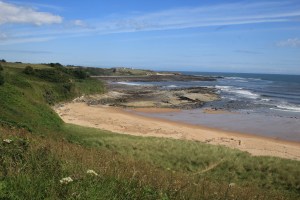
11. Druridge Bay is a seven-mile-long beach stretching from Amble in the north to Cresswell in the south. At its centre is the Druridge Bay Coastal Park with a mass of bird hides, flooded quarries and family activities
12. The beach at Boulmer lets you get up close to the Coble, the traditional Northumbrian wooden fishing boat, whist at Alnmouth you can explore the village and grab a coffee at England’s oldest nine-hole golf course clubhouse.
BRILLIANT BERWICK
Berwick -upon-Tweed is England’s most northerly town. You can easily spend an amazing day here:
13. Take a circular walk on Europe’s finest preserved late medieval town walls with stunning views of the Tweed Estuary.
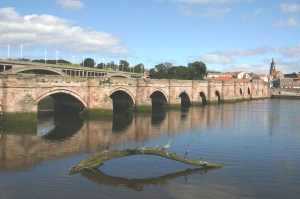
14. Explore one of Britain’s first purpose-built barracks holding three museums and part of Glasgow’s World famous Burrell Collection.
15. Take a free tour of the town’s ancient Guild Hall with its cells and old courthouse.
CASTLES IN THE AIR
16. Dunstanburgh can be reached on foot from Craster and is a flat, 1.3-mile gentle stroll along the side of the coast.
17. Lindisfarne Castle is something of a Tardis. You get the impression of a medieval fortress mixed with a warm country house.
18. Warkworth has a bonus as you can get a boat to cross the river and visit the carved cave of the Hermitage.
19. Bamburgh is the iconic castle. Dominated by its walls and 12th century Norman keep, at times it seems more like a stately home. Stunning views from the walls.
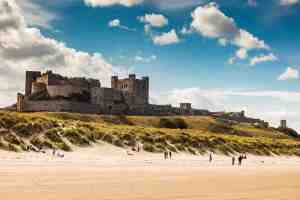
ART FIX
20. Walk in the footsteps of LS Lowry and stand where he stood to paint by taking the Lowry Trail around the town. Famous for his matchstick-men paintings, the artist would holiday frequently in Berwick and as a result he produced more than 36 paintings here.

